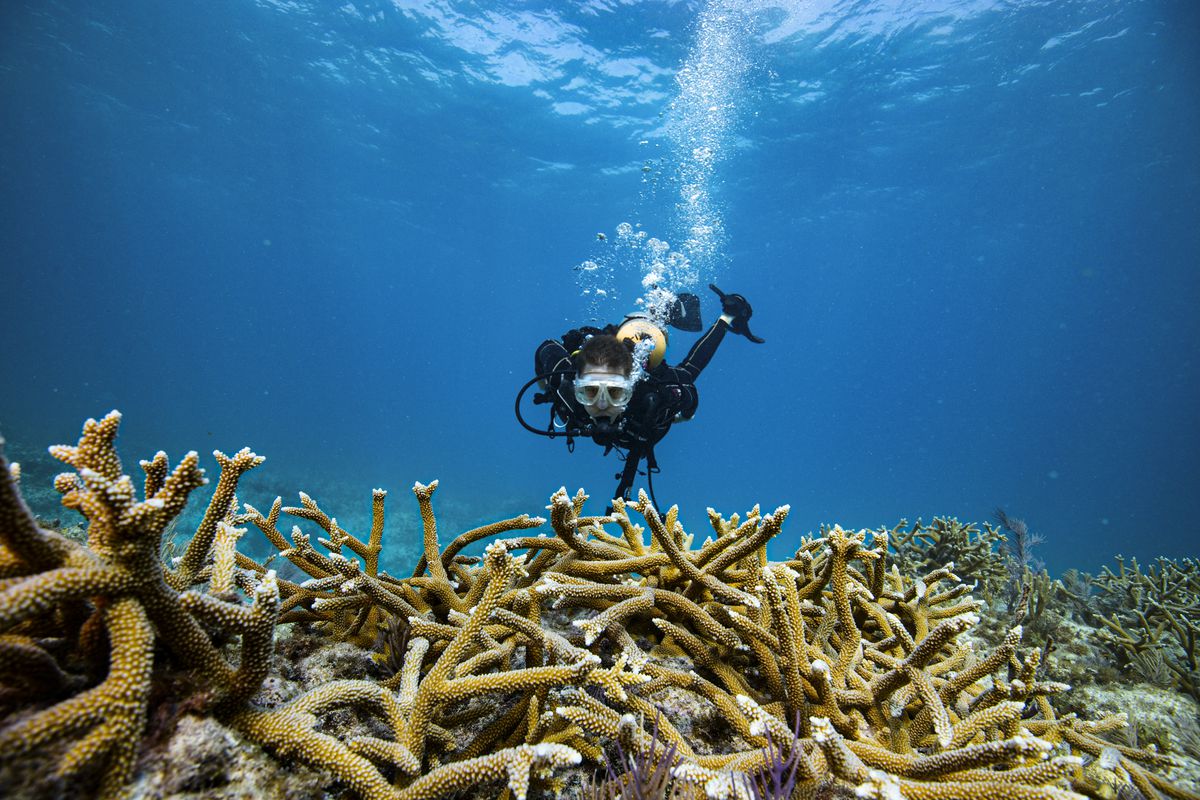This story is part of Recode by Vox’s Tech Support series, which explores solutions for our warming world.
COOK ISLAND, Florida — The reef was dark. Hanna Koch, a marine biologist, hovered inches above bumpy mounds of mountainous star coral. She had already spent hours underwater that night, breathing air from scuba tanks.
Then it happened: Hundreds of tiny pink spheres burst from the coral. Koch screamed, forcing bubbles out of her regulator, which rose above her blonde hair. Around her, other clumps of mountainous star coral began erupting, too, until the reef looked like a snow globe.
It was around 11 pm on a warm night in August 2020, and the coral was spawning. This is how many corals breed: Each sphere contains a mix of sperm and eggs, and if all goes to plan, the sperm from one individual will fertilize the eggs of another.
Koch, a scientist at Florida’s Mote Marine Laboratory and Aquarium, was giddy with excitement. She started dancing underwater with another researcher, stirring up bioluminescent critters that emitted bright flashes of blue light. “We created our own fireworks,” Koch told me when I visited her lab in Summerland Key, Florida, a year and a half later.
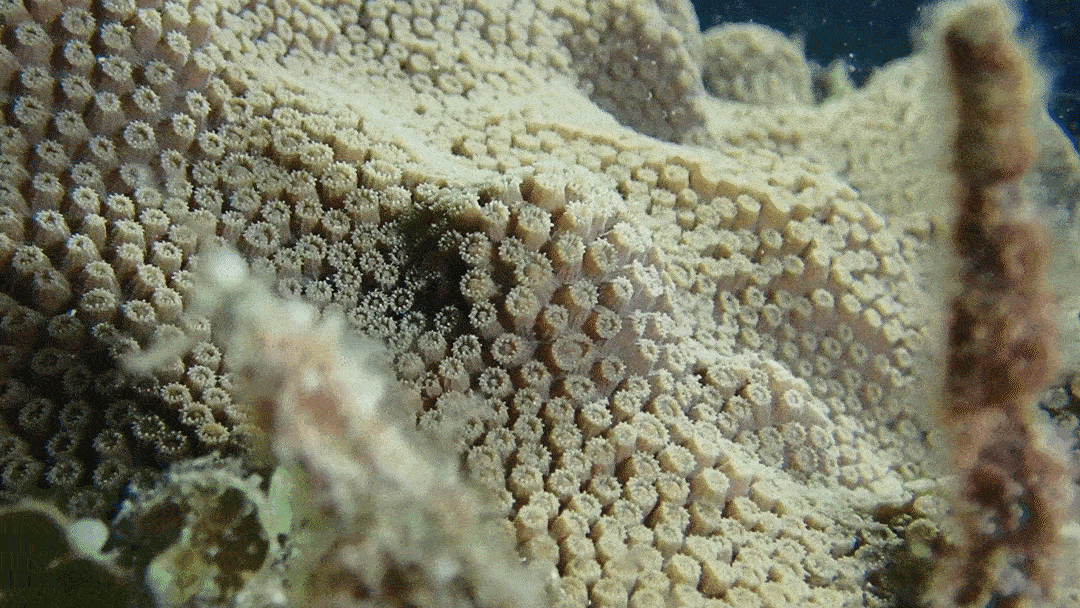
It’s rare to see corals reproduce in the wild, and it was a first for Koch — spawning typically happens just once a year. But that night was also special for another reason: Many of the spawning corals were individuals that Mote researchers had planted on the reef five years earlier. Those corals survived Hurricane Irma, extreme heat, and a disease outbreak, and still grew large enough to reproduce, all in record time. It was a rare sign of hope for an ecosystem under siege.
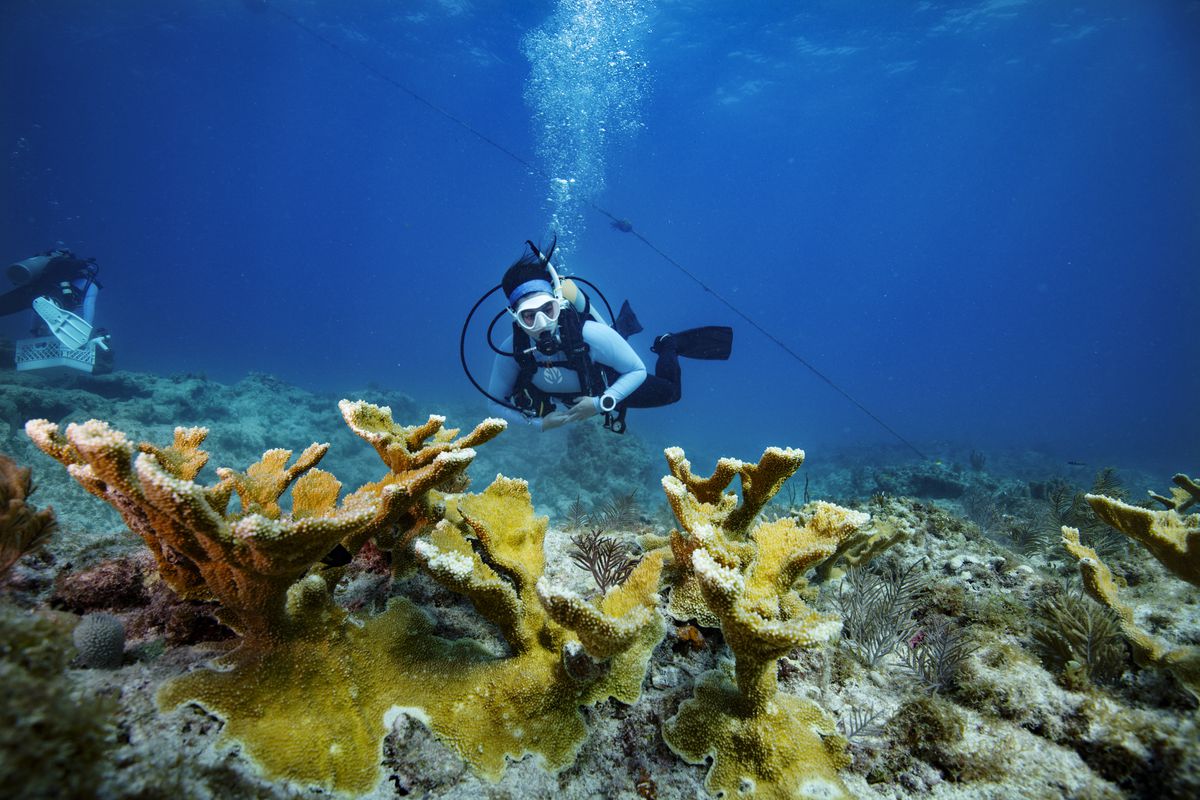
Madalen Howard, above, swims near large elkhorn corals in the Florida Keys. A nonprofit organization called the Coral Restoration Foundation, where she works, planted them here a few years ago.
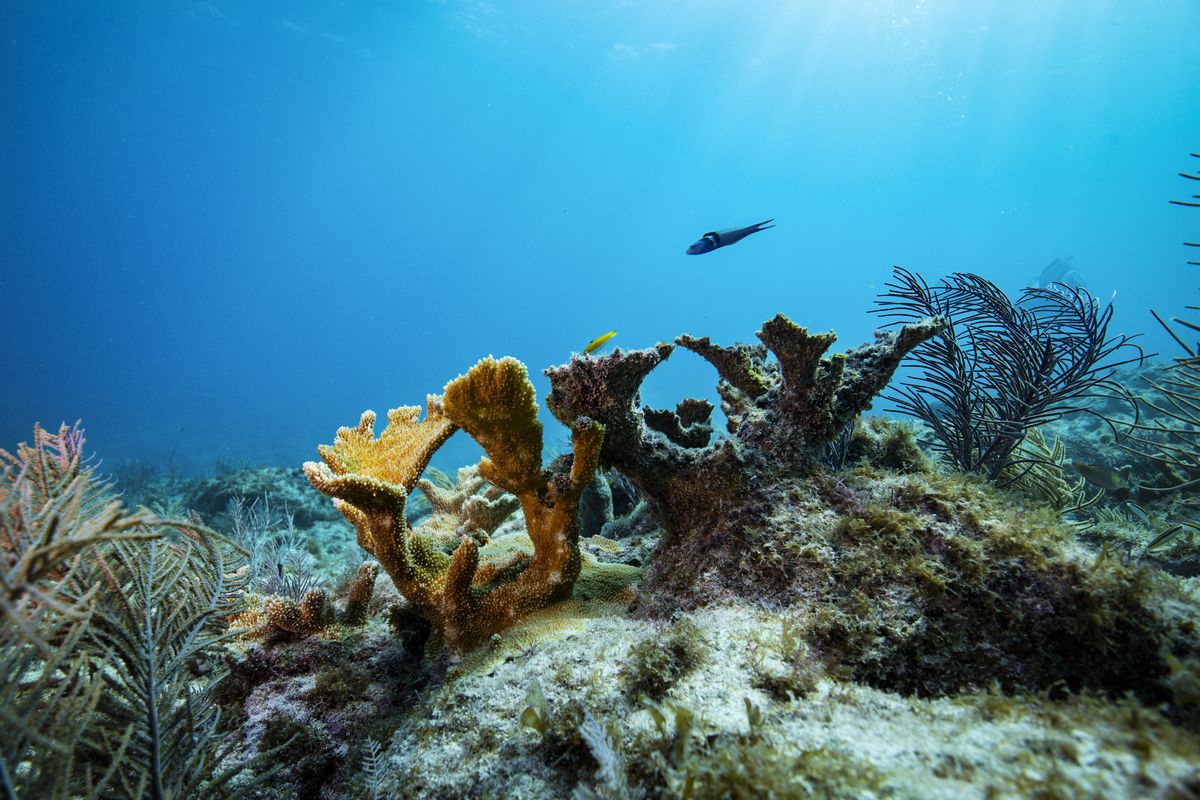
Coral reefs cover less than 1 percent of the world’s oceans but are home to more than a quarter of all marine life, including the clownfish, seahorses, and other creatures that make these ecosystems special. But coral reefs are slipping away. Warming seas, diseases, and other threats have already wiped out more than half of the world’s corals, and more than 90 percent of those in Florida. “I don’t think people realize how bad it is,” said Koch, who has seen centuries-old corals disintegrate in front of her eyes.
Now, a growing number of organizations are racing to plant corals in damaged reefs, just as conservation groups plant trees in degraded forests. And so far, it seems to be working. They’ve restored hundreds of thousands of corals in places like Florida and Indonesia, and groundbreaking scientific research is helping to fortify these creatures against rising temperatures and other threats.
But the clock is ticking. The scale of coral planting is still small, and just 1.5 degrees Celsius of warming, relative to the preindustrial era, could destroy up to 90 percent of the world’s tropical coral reefs. We’re likely to hit that threshold in a matter of years.
An accident that revolutionized coral restoration
Corals are a marvel of nature. Each one is made up of hundreds to thousands of animals — yes, animals — living together in a big community, like a densely packed apartment building. Known as polyps, the animals have tentacles armed with stinging cells and a mouth, and they work together as one superorganism.
These animals are, perhaps, the world’s best example of intra-species teamwork, or symbiosis. They ingest microscopic algae into their stomachs and use them as an in-house factory for nutrients. The algae provide corals with the sugar they generate through photosynthesis, which the polyps need to grow, in exchange for nitrogen, carbon dioxide, and a sunlit workspace. (While coral polyps can use their tentacles to capture food, the majority of their energy — and much of their color — comes from these algae partners.)
A single polyp grows into a colony by cloning itself over and over, not unlike how some houseplants bud. This process of asexual reproduction is slow — on the scale of a few millimeters per year, for some species — which poses a challenge to restoration, a field in which time is of the essence.
He checked the broken pieces again two weeks later, and his eyes widened: Each fragment had grown into a dime-sized colony of its own. What would normally take two years took only two weeks.
Vaughan later tried this approach — known as microfragmentation — on nearly 20 species of Atlantic coral. “It worked on all of them,” said Vaughan, who has since pioneered the approach for restoration. He began growing 600 corals a day (instead of in six years) at Mote, where he led the International Center for Coral Reef Research and Restoration. “We started running out of tank space.”
On a sunny April morning, I met Vaughan at a Boy Scout base on Summerland Key, where he’s built what you might call a coral garden center. There were more than a dozen shallow tanks under a shaded awning, each filled with small bits of coral cut with a diamond-tipped band saw. After the fragments grow large enough, Scouts will plant them on a nearby reef in the ocean.
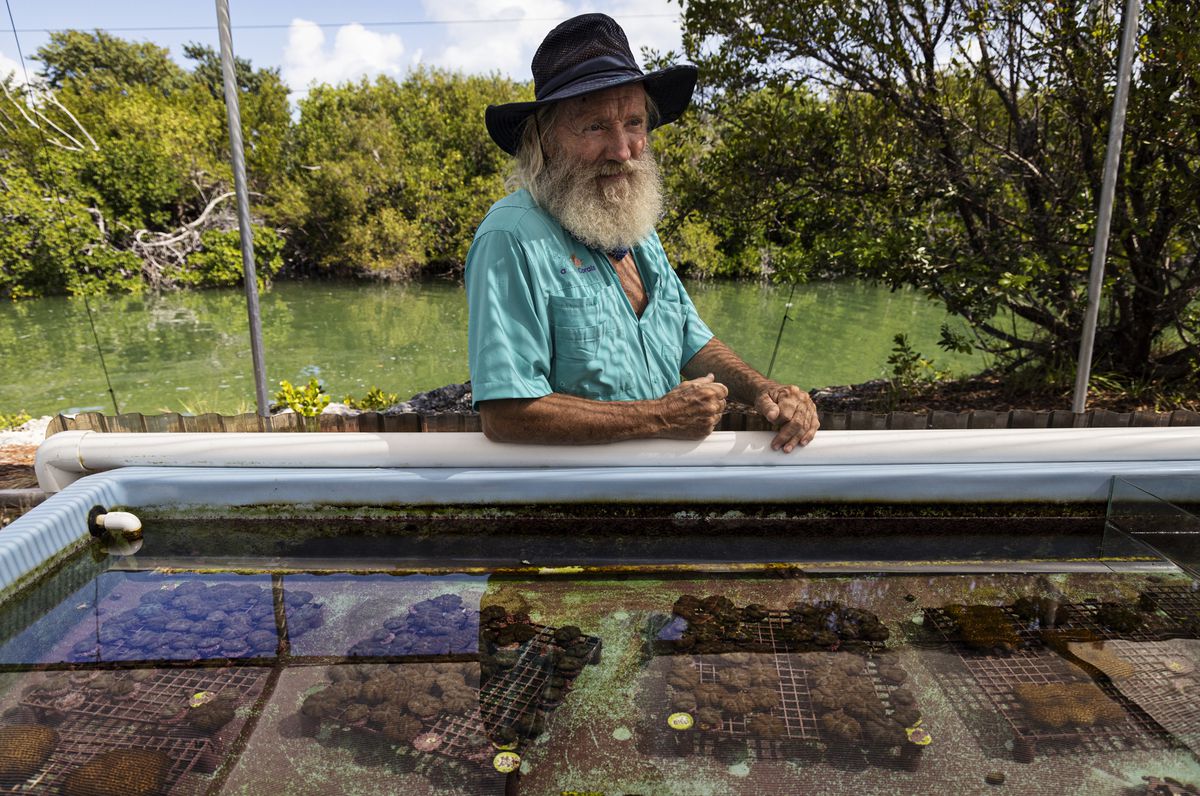
Wearing blue Crocs and a safari hat, Vaughan, who speaks enthusiastically about his work, reached his hand into a tank with wine-red blushing star coral. He stirred the water above them. Their red tentacles quickly retreated, making the coral appear white.
In another tank, small coral pieces from the same individual were planted near each other, and some were starting to fuse together. It’s another shortcut in restoration, said Vaughan.
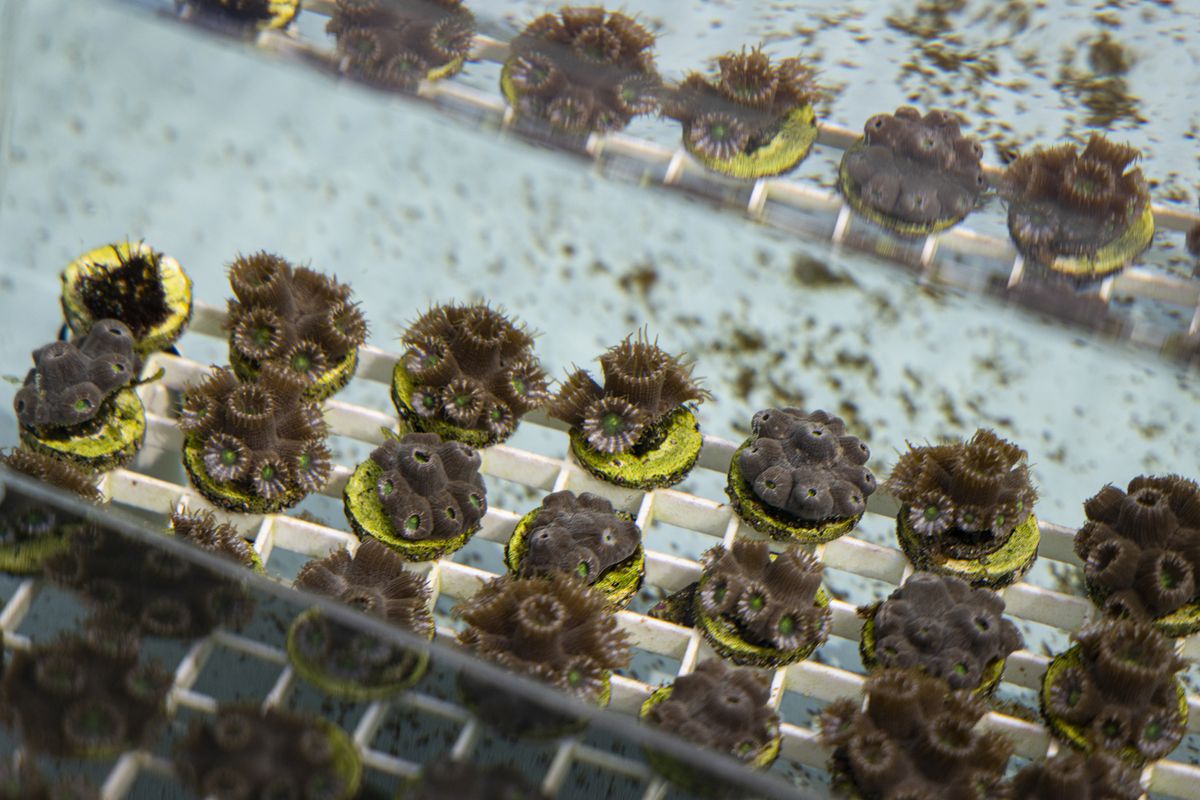
Fragments that recognize each other as themselves will merge into one larger coral. And in the coral kingdom, Vaughan said, size matters more than age; they only spawn once they reach about the size of a basketball.
“Instead of waiting 100 years, they’re reproductive in just a couple of years,” Vaughan said. “They’re basically spawning as kindergartners.”
Then it was my turn to give coral fragmentation — or “fragging,” in restoration lingo — a try. I’m not exactly experienced with power tools, but I pressed my foot gently on the band saw’s pedal and slid a quarter-sized piece of brain coral into the blade.
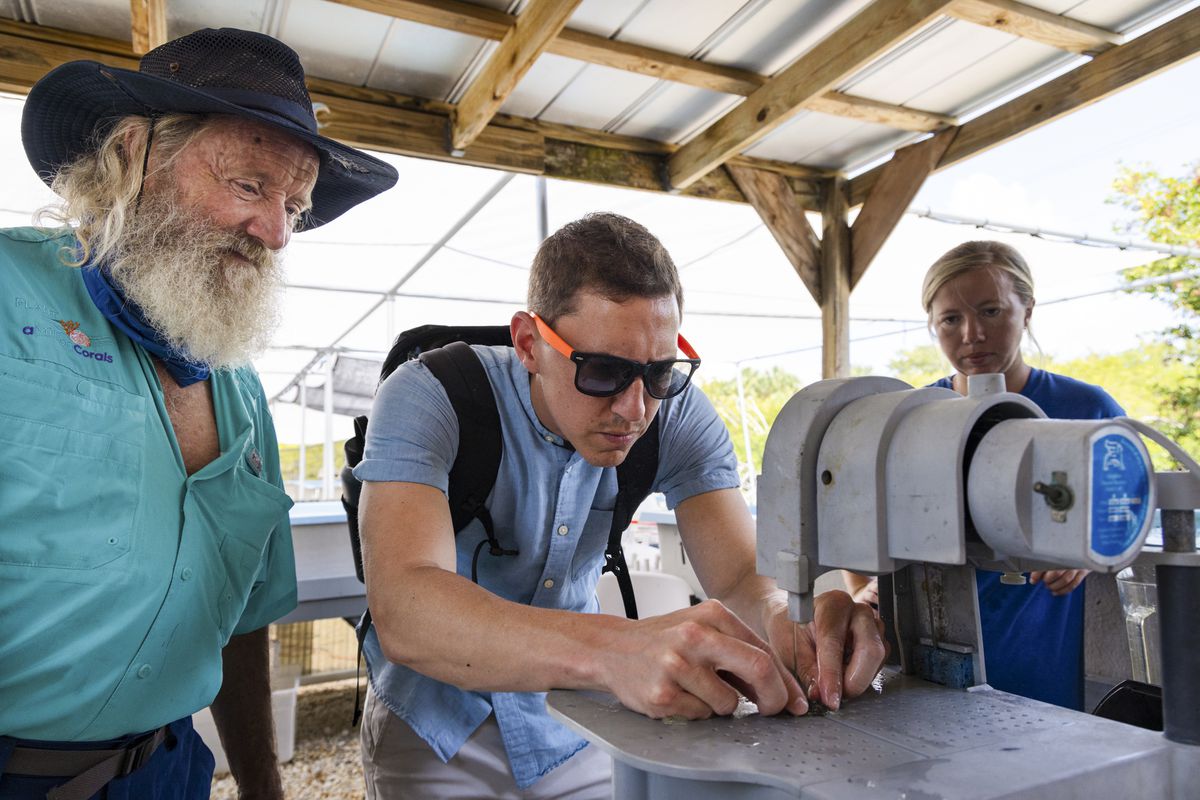
That turned one fragment into two, which I then cut in half again.
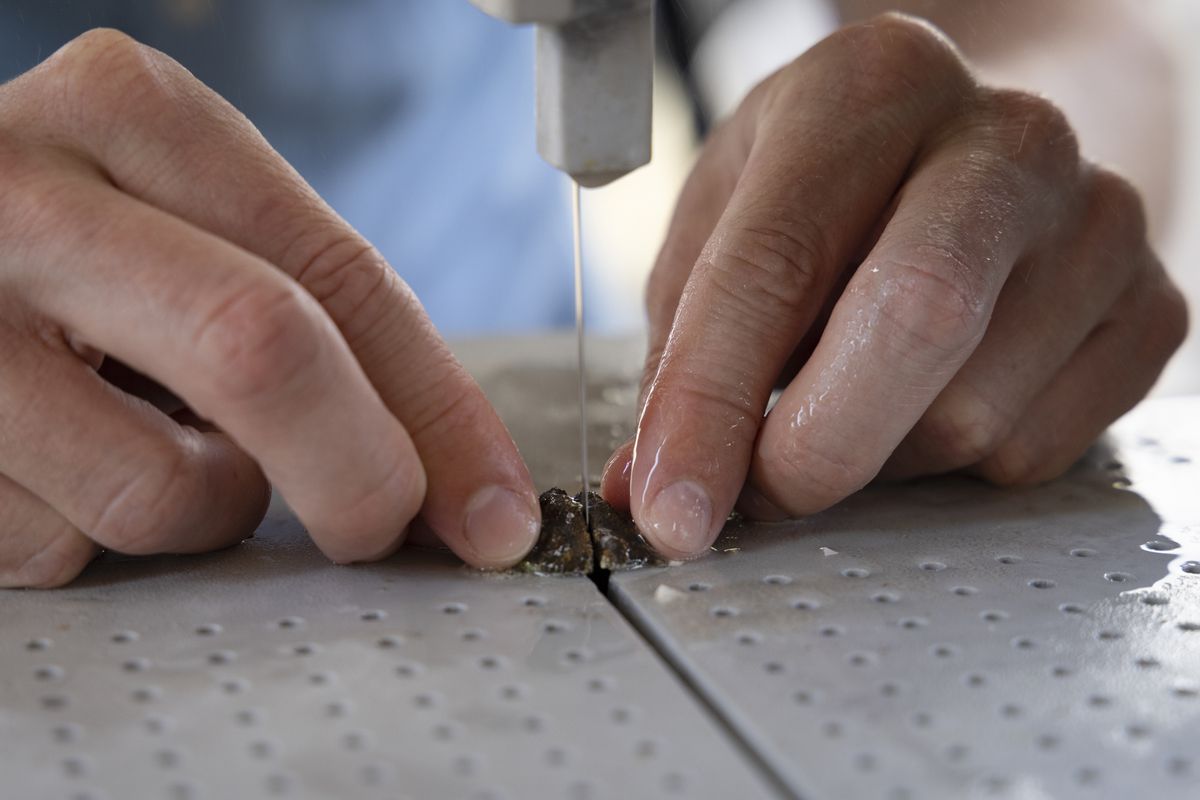
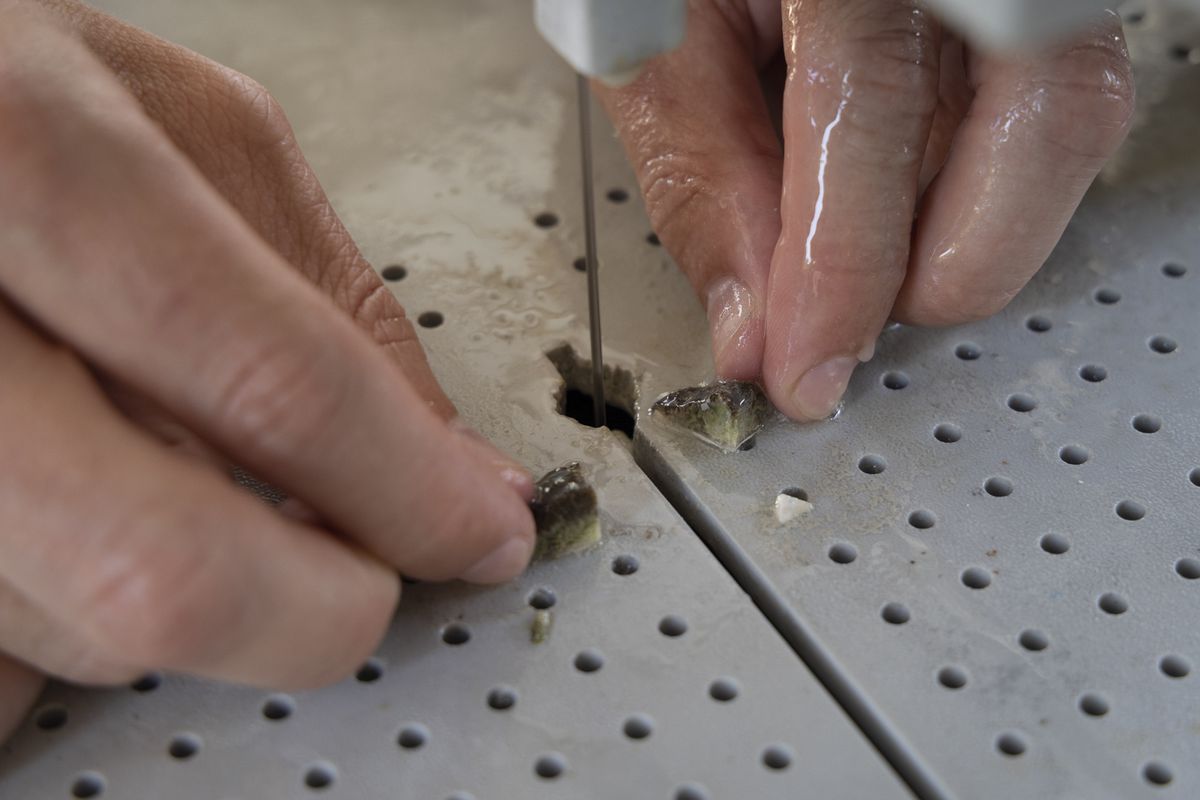
Just like that, I had turned one coral into four. Each will quickly grow into a colony, Vaughan assured me, and one day someone will plant them on a nearby reef.
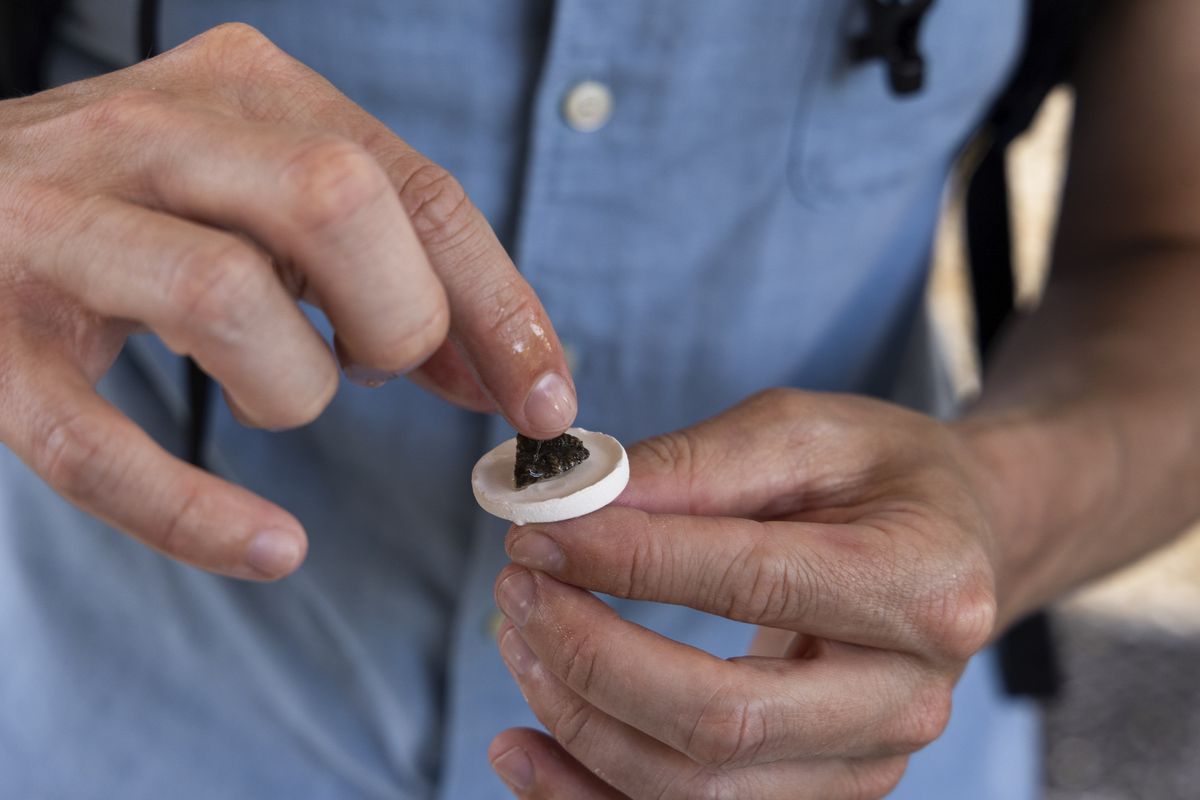
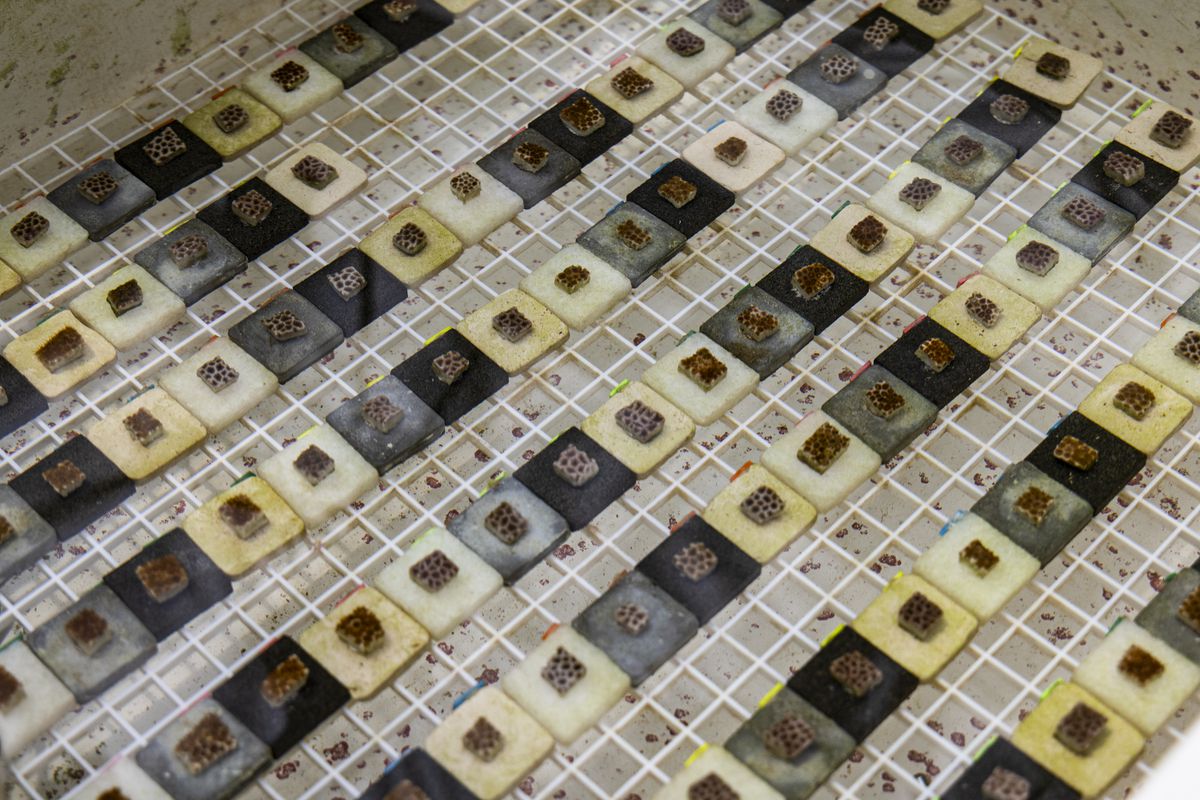
With this approach, Vaughan is trying to plant a million corals — literally. In 2018, he left Mote and founded a nonprofit called Plant a Million Corals. “If we can’t show that we can plant a million corals, then it’s a hopeless cause because there’s a giant ocean out there,” Vaughan said.
The magic of coral sex, and why scientists need to intervene
Restoring reefs with coral fragments comes with a catch: Each piece is a genetically identical replica of another. That means if one is susceptible to, say, disease, all of them might be. We grow many varieties of potatoes for the same reason that scientists want to grow many varieties of corals. Resilience in nature is rooted in genetic diversity.
A simple way to boost diversity is to get corals to breed, but in practice, it’s not so simple. Corals have no eyes or brains (not even the brain corals!) yet they’re able to synchronize spawning across large swaths of the ocean, like cicadas that somehow know when to erupt in unison from the ground. Perhaps even more remarkable, spawning tracks along the phases of the moon. (For example, the mountainous star coral that Koch saw spawn in the wild in 2020 did so several days after the full moon.)
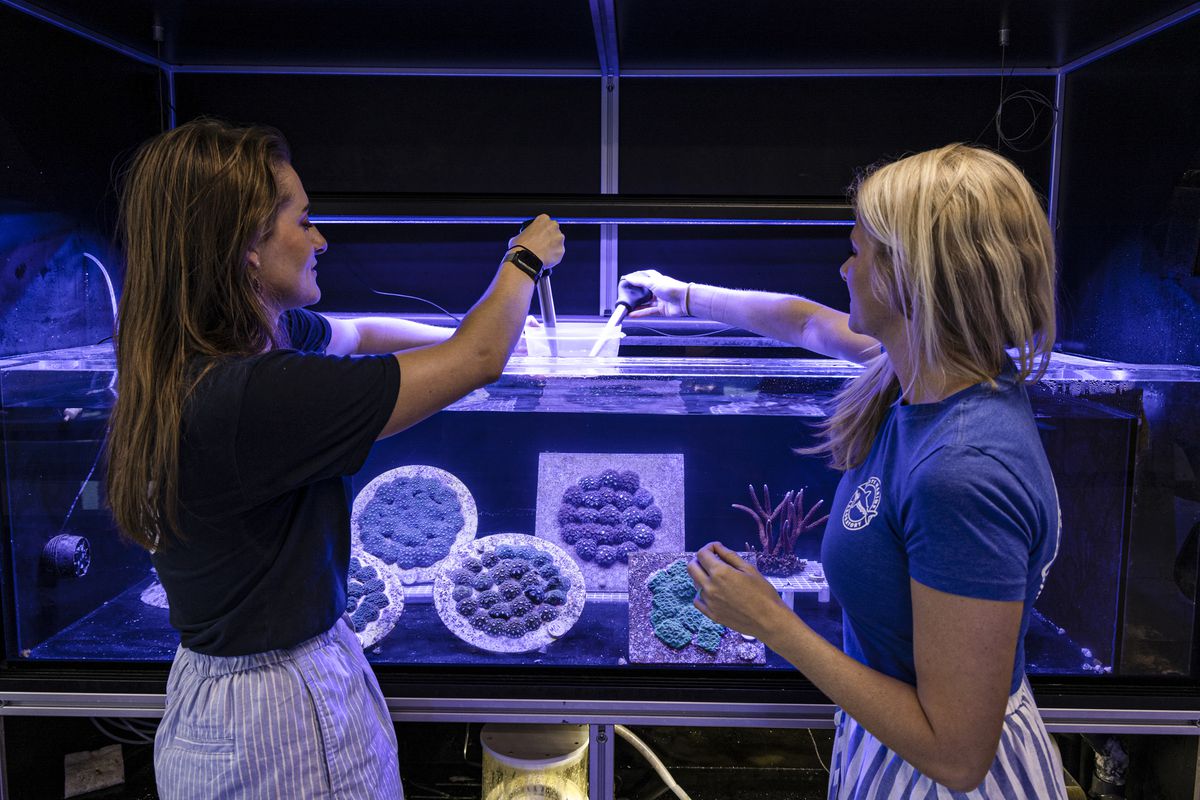
These spawning tanks have since become a lifeline for some species. In the last decade, a mysterious disease called stony coral tissue loss has wiped out more than 90 percent of Florida’s Atlantic pillar coral, a species that looks like bony fingers rising from the seafloor. The Florida Aquarium in Tampa has a rare collection of healthy pillar coral fragments, and a few years ago, a scientist there, Keri O’Neil, got many of them to breed.
“You can legitimately say we were saving a species from extinction,” O’Neil, a senior coral scientist at the aquarium, told me over the phone. Many of the corals she’s spawned come from genetic varieties that no longer exist in the wild, she said.
I was eager to see one of these tanks myself, and thankfully, Koch has one.
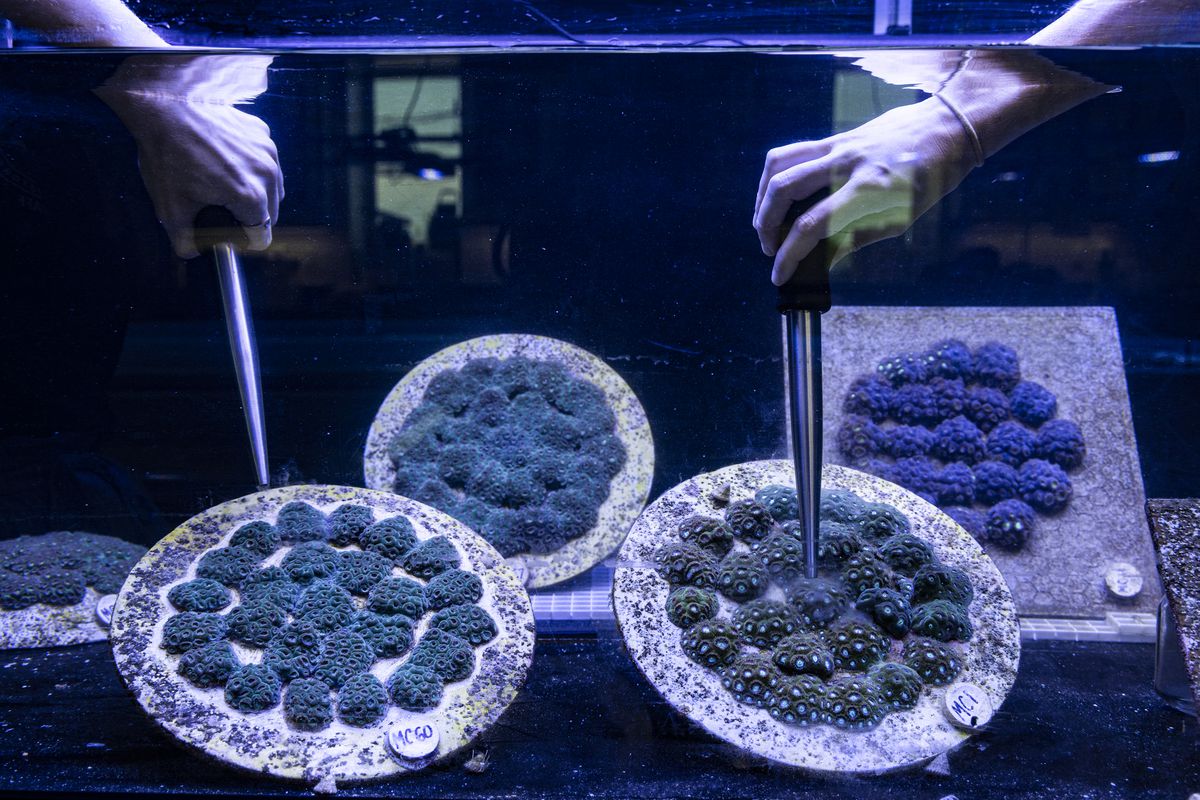
The 250-gallon system sits in her wet lab at Mote, near a small aquarium with pet clownfish (Gladys and Earl) and a few shallow tubs of baby corals. A beautiful red staghorn coral sat inside, along with several great star corals, one of which glowed bright green under the hood light. A few had their tentacles out, waiting for scraps of food to float by.
Staff biologist Celia Leto showed me how the roughly $30,000 system works. Using a computer, she can tell it to mimic any time of year, such as a warm day in August or a chilly winter night, and the coral will be none the wiser. And the best part? These tanks give researchers the power to spawn corals during work hours.
Diving in an underwater forest
On a breezy afternoon a few days later, I was in a boat near Key Largo trying not to throw up. With a scuba tank strapped to my back and fins on my feet, I held my mask on my face, leapt off the stern, and sank slowly toward the seafloor.
There, I found myself floating in a massive underwater forest. Hundreds of “trees” made of fiberglass and PVC were hanging from buoys in the water, tethered to the sandy bottom. Fragments of orange, pink, and green corals hung from their branches like earrings on a jewelry stand. I was scuba diving in the ocean’s largest coral nursery.
Before planting corals on a reef, some organizations raise them in nurseries out in the ocean, like this one, owned by the nonprofit Coral Restoration Foundation (CRF). Growing corals at sea is cheaper than raising them in a lab, and there’s no limit on space. The tree structures, meanwhile (which the nonprofit developed), give corals access to plenty of light and nutrients.
I’m awkward underwater, but I managed to swim through the forest without knocking any corals loose. All kinds of fish were hiding out between the branches — angelfish, trunkfish, triggerfish, and others I couldn’t identify.
Amelia Moura, who leads CRF’s science program, was in front of me, swimming with the grace of someone who has logged more than 1,000 dives (she has). Moura stopped at one of the trees strung with staghorn coral and, using a wire cutter, began to lop off hand-sized chunks.
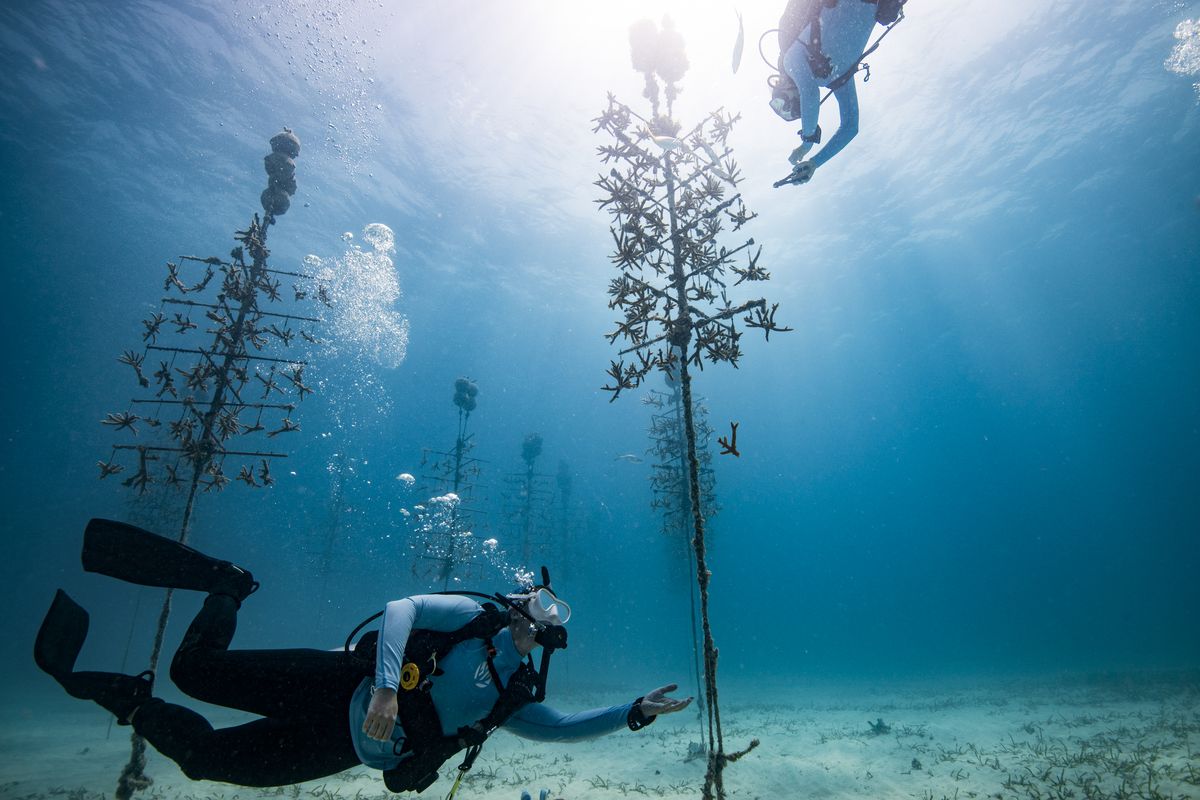
Her coworker counted the pieces and put them in a plastic milk crate. Then we all swam to the surface and climbed back on the boat.
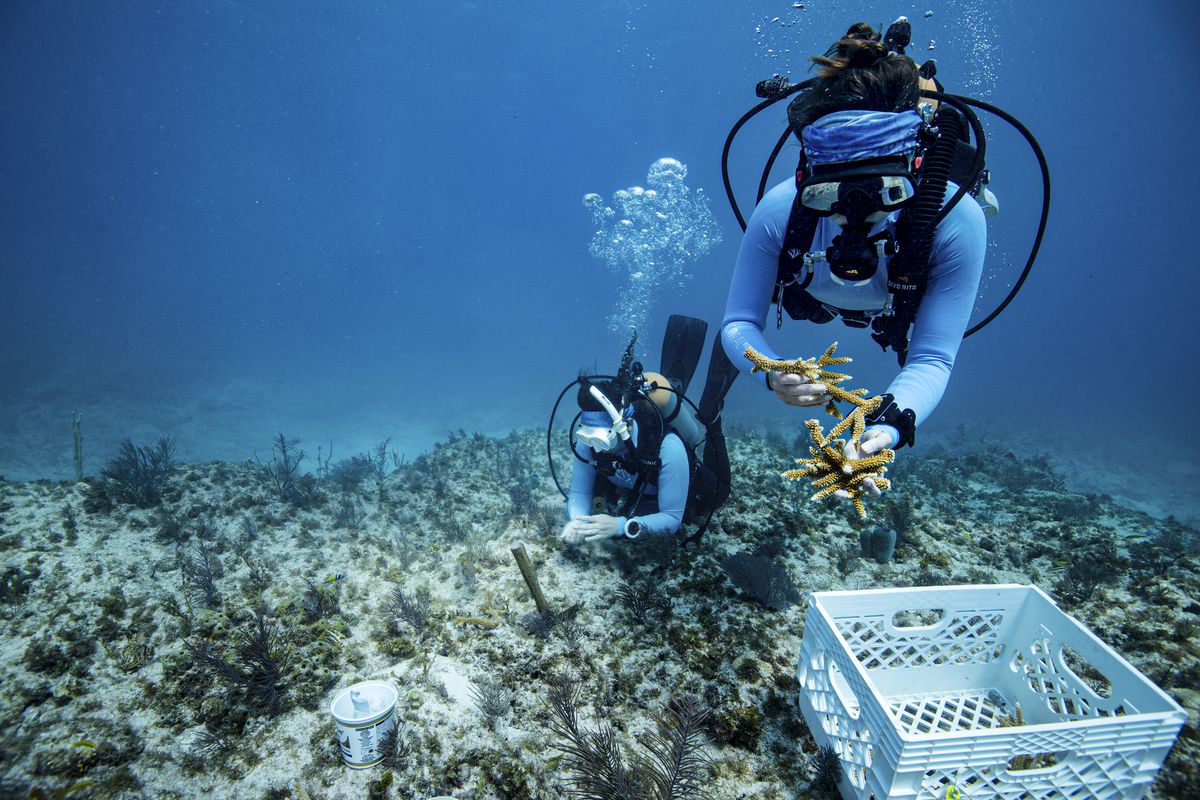
An hour later, we were back down, this time at a spot called Pickles Reef. It looked pretty dead, but Moura’s team is helping it heal. In a bare spot on the reef, she and her coworker started gluing down 21 new pieces using a special marine epoxy.
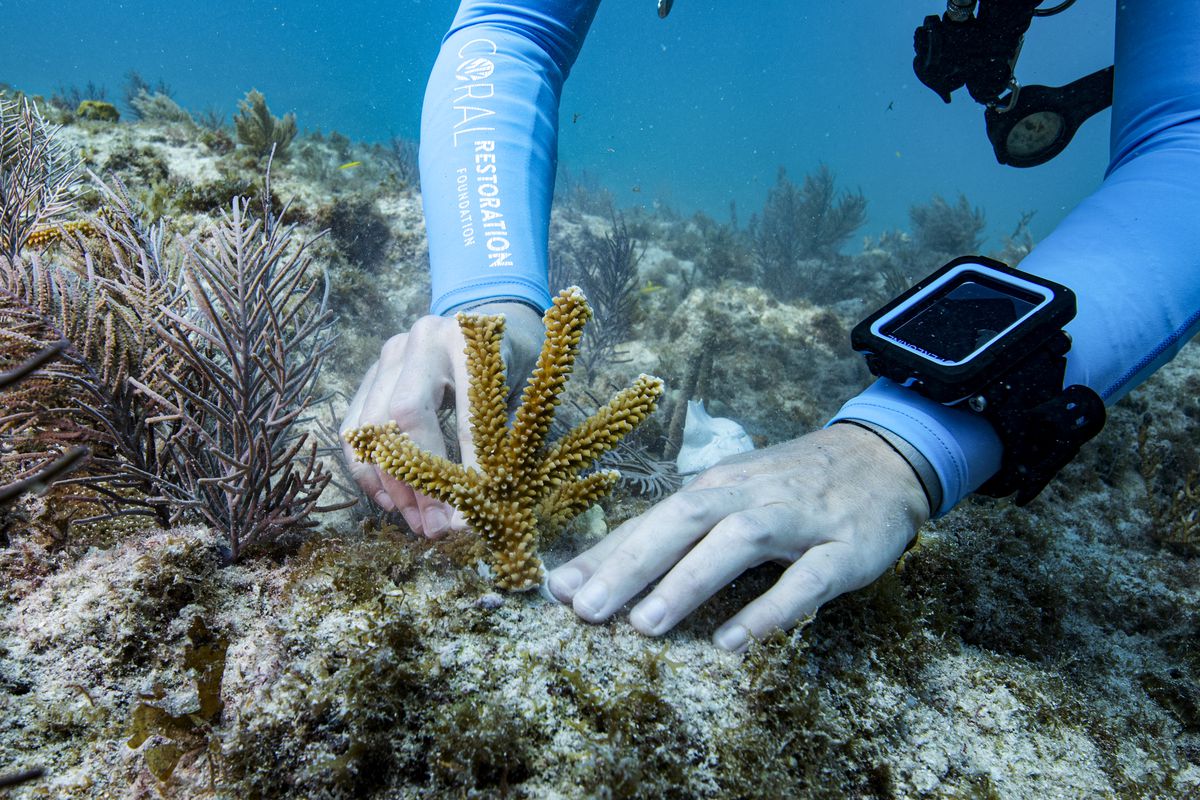
She then led me to a spot where CRF had planted coral a few years ago. It was spectacular: Some of the elkhorn corals were wider than a meter and made of orange polyps that popped against the blue water. The staghorns were huge, too, and looked like messy piles of spears.
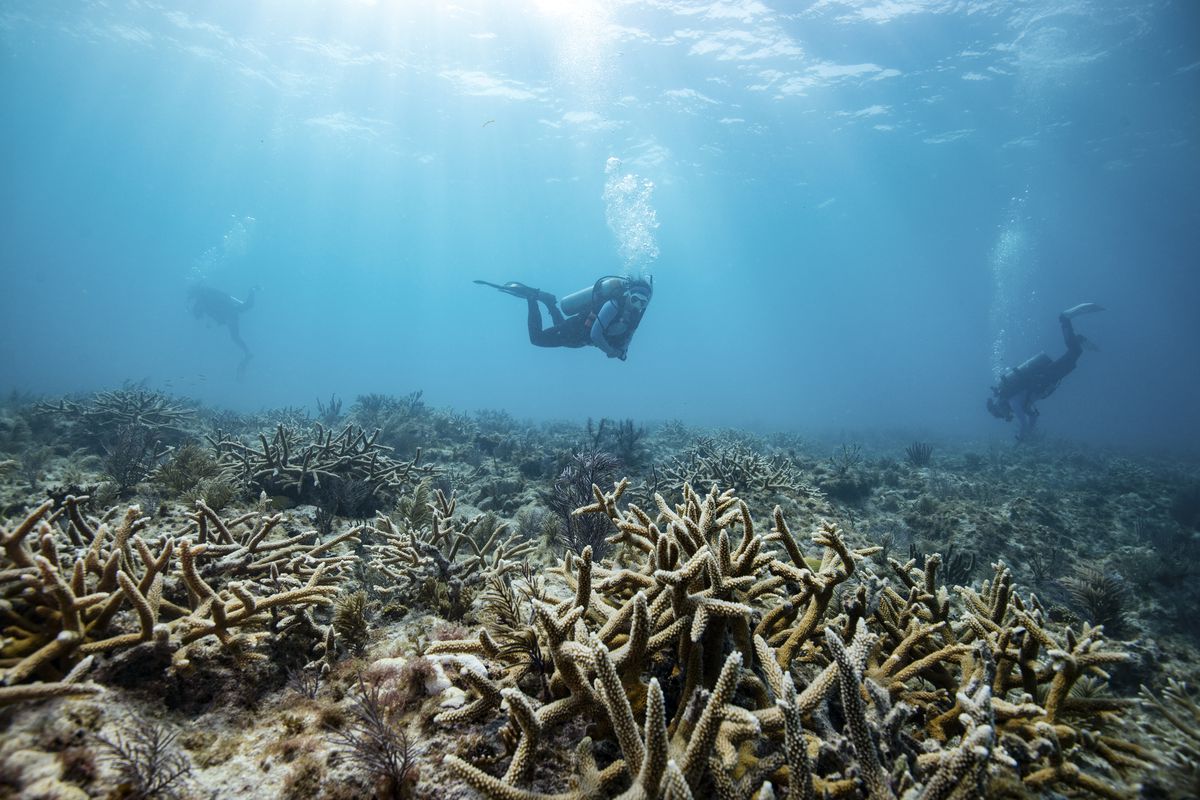
As I wandered around the reef, I encountered a colorful sea slug called a nudibranch (a red-tipped sea goddess nudibranch, I’d later learn). Shortly after, a small green sea turtle swam by. Both sightings reminded me that it’s not just the reefs that scientists are trying to save but the entire web of life that depends on them.
Giving coral its best shot at survival
To regrow a reef, you don’t just need to plant corals. You also need to make sure they can survive as the oceans get hotter and more acidic, and diseases spread. And that could mean working to improve the corals themselves.
One approach is through selective breeding — essentially, a strategy to speed up evolution. If a certain trait, like heat tolerance, is rooted in a coral’s DNA, scientists could theoretically breed that individual coral with others to create heat-tolerant babies.
In a tank outside at Mote, for example, Koch is nurturing what she calls her Holy Grail — a group of baby staghorn corals from two parents that were both resistant to white band disease, another epidemic in Florida’s waters. Soon, Koch will run experiments to see if the babies are resistant, too.
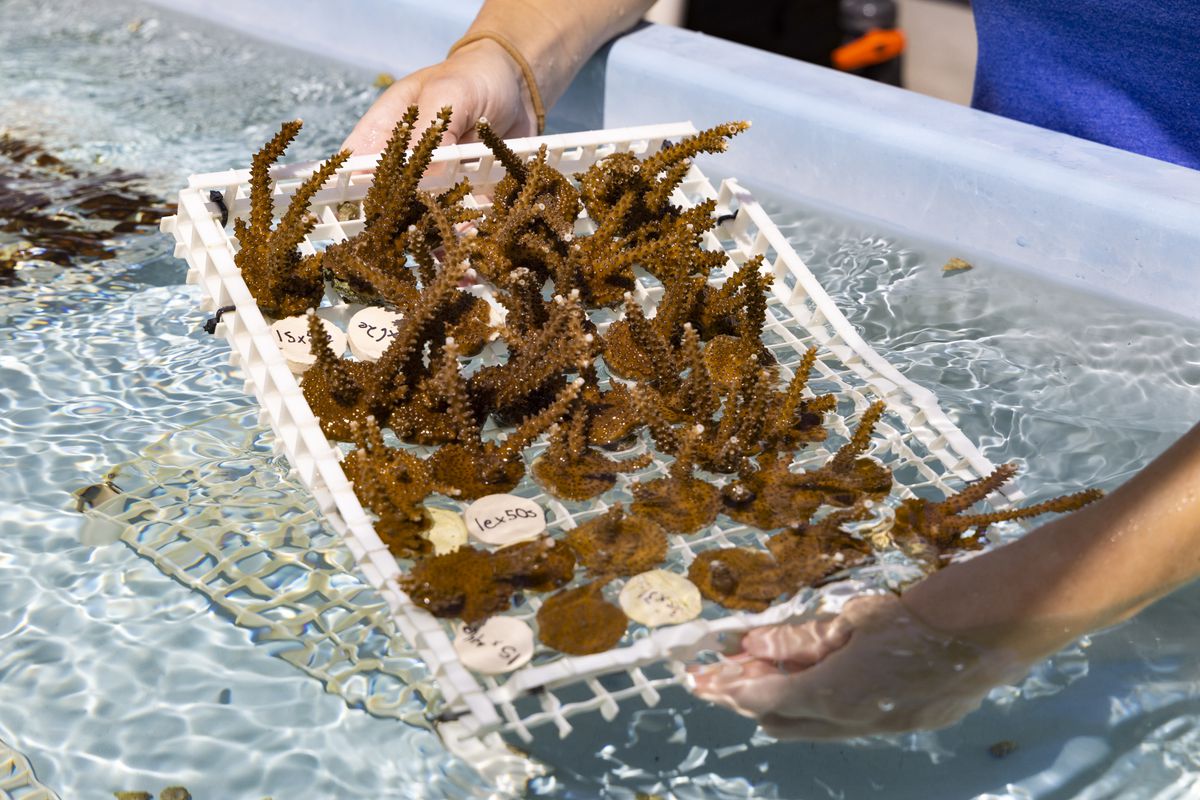
A coral’s tolerance to heat is at least somewhat rooted in its genetics, research shows, which means that we could breed corals to better withstand warming. But scientists have also learned that tolerance depends to some extent on the kind of algae that corals partner with, said Liv Williamson, a doctoral researcher at the University of Miami.
Under extreme heat, the algae living inside polyps stop producing sugar and, instead, start emitting toxins. The polyps respond by kicking out the colorful algae, which makes the coral weak and turns it white — that’s coral “bleaching.” However, certain kinds of algae can withstand higher temperatures without harming polyps, according to Williamson. Theoretically, you could inoculate corals with these algae before putting them on a reef, she said, as a way to stave off bleaching, the greatest threat facing coral reefs today.
Other scientists are taking a totally different approach: trying to make the ocean more hospitable to coral. That’s the reason Jason Spadaro, another Mote scientist, is raising Caribbean king crabs. Native to the Keys, these crustaceans love to eat all kinds of algae that are spreading across Florida and polluting its waters, making it hard for corals to take root and grow.
These investments pay off. Beyond the inherent value of coral reefs and the animals that live on them, these ecosystems are useful to humans. Many of the roughly 1 billion people who live near coral reefs depend on them for food, income, and protection. By acting as natural seawalls, reefs prevent $1.8 billion each year in flooding-related damage in the US alone.
When I first arrived in Florida, I met Vaughan at the southernmost state park in the continental United States, on the southeastern shore of Key West. I was here to snorkel and see coral that Vaughan had planted a few years ago.
It got off to a rough start. The water was so murky I could barely see my hand in front of my face, much less anything resembling sea life, and fresh in my mind was a sign near the beach warning swimmers of the jellyfish-like stinging man o’ wars known to cruise in those waters.
I’d have to dive down to see anything worth looking at, so I took a deep breath and swam to the bottom, 10 feet below. Looming up through the cloudy green water, the reef emerged. There were brain corals and mountainous star corals the size of salad plates, and schools of fish that zoomed by in blurs of yellow, white, and green. I heard the crackling sounds of shrimp and parrotfish and other critters. Just a few years ago, there was little more than rocks and sand on this ocean floor. Now the reef was alive.
